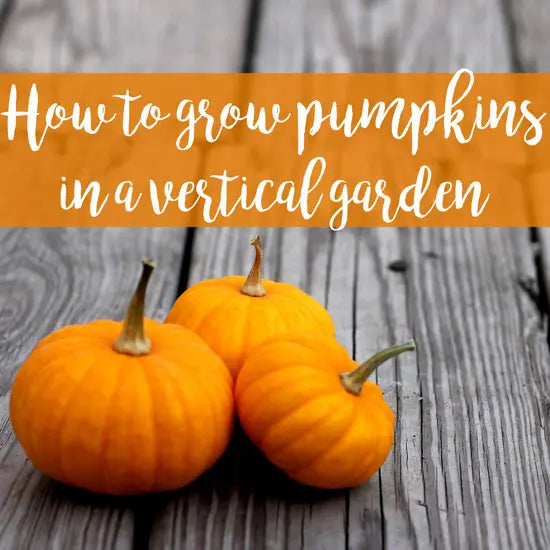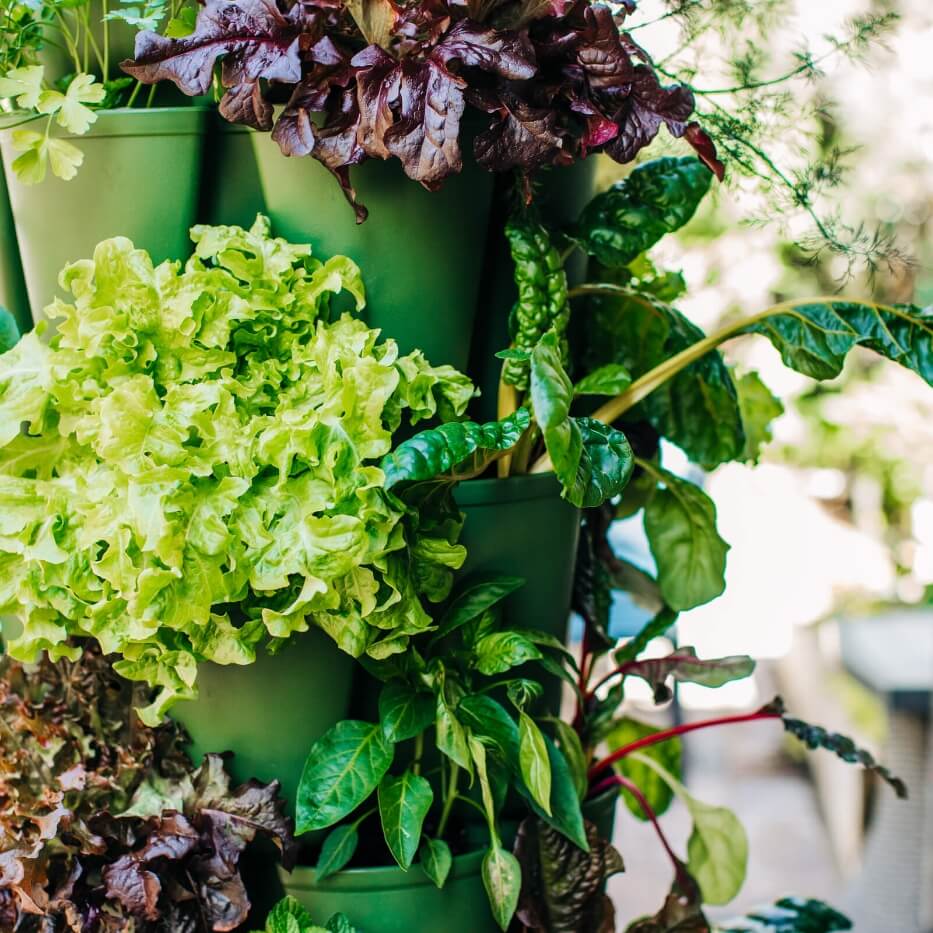We love trying new plants in our GreenStalk Garden and pumpkins were no exception. We've grown watermelon, tomatoes, sweet potatoes and more vertically, but never pumpkins - until this year. Keep reading to find out how it went.
Get Off to a Good Start
I decided to start with the Jack Be Little Variety since it produces several small pumpkins that mature relatively quick. I planted one seed per pocket and alternated so each tier had 3 seeds. In the remaining pockets I planted a fast growing yellow squash called Tempest. I figured that both varieties would grow at similar rates. They did not. The pumpkins overtook the squash very quickly and the squash never really produced. Next time, I would just plant 1-2 pumpkin plants per tier because they grow like crazy!
One of the most important things to keep in mind when growing pumpkins vertically is that you need to start with the right potting mix. Pumpkins, like most plants, don't want to sit in water. Each tier has 12 drainage holes so excess water can drain out but a bad soil mix will still be harmful to plants. Make sure that the mix is light, fluffy and drains well. Look for mixes formulated for containers - they will be more expensive, but are definitely worth it.
Pumpkins are a tender annual so make sure to plant after the chance of frost has passed. If you live in a cold climate, transplant starter plants instead of trying to grow from seed since most pumpkins will take awhile to mature.
Support
Since our pumpkins were so small, they were fine without extra support. But if you're growing larger pumpkins, you will need to either plant them in the bottom tier and let them trail onto the ground or provide a support structure for them. We go more in-depth about support in our article on how to stake plants growing vertically and how to grow watermelon in a GreenStalk.
You can grow pumpkins in a 3, 4 or 5 Tier GreenStalk Vertical Planter. We typically grow in 5 Tiers, but that's because we are looking to test a bunch of plants at once and also because the 5 Tier is our most popular size.
Watering and Fertilizing
Keep the soil moist but not wet. Like most plants, you'll need to water daily to every couple of days in the summer months. If you're going out of town, make sure someone checks on your plants at least every other day. Especially while the pumpkin plants are fruiting it's important to keep them well watered.
Fertilize your pumpkin plants as needed. If you use a new high quality potting mix with compost or nutrients added, you probably won't need to add any nutrients until about 4-6 weeks or so especially if growing from seed. We like to add Crab and Lobster Shell along with the Kelp Meal when planting to make sure there's plenty of calcium in the soil along with a good N-P-K ratio for fruiting plants. We also fertilized with the Tomato and Veg Fertilizer once a week to keep the plants happy all summer.
Disease Issues
Our plants got powdery mildew pretty early on. All of our squash and cucumber plants did this year - including the ones that were supposed to be resistant to it. We believe this is due to growing in a covered greenhouse. Disease spreads quicker and it stays more humid. This definitely impacted the production of the plants.
What are your pumpkin growing tips? Leave them in the comments below!
Questions about growing pumpkins or the GreenStalk Vertical Planter? Email us at grow@greenstalkgarden.com
Happy Gardening!










